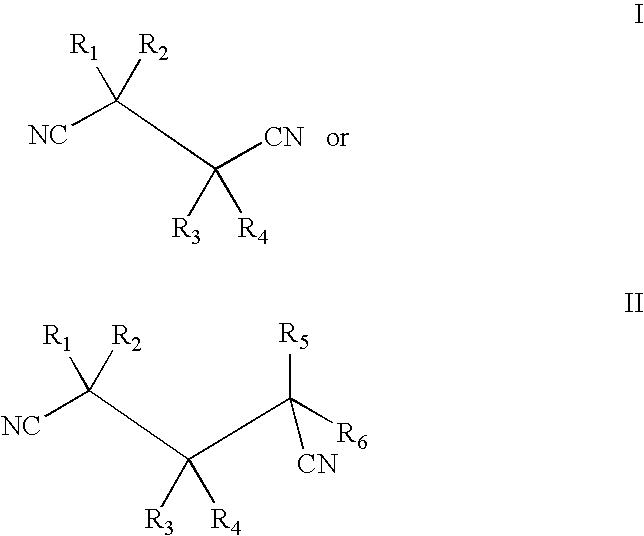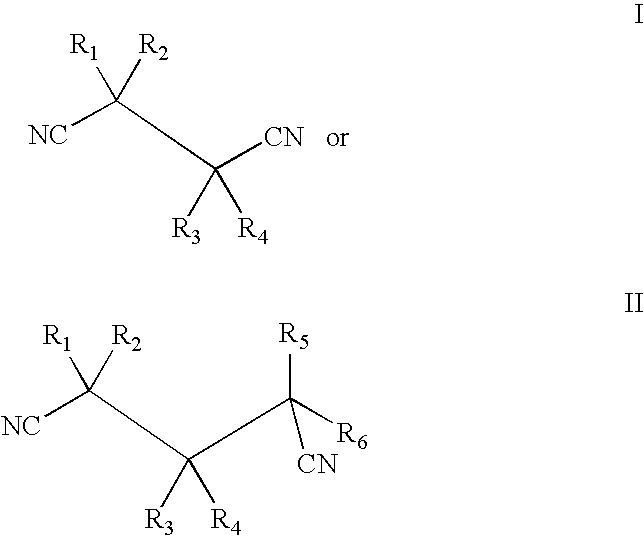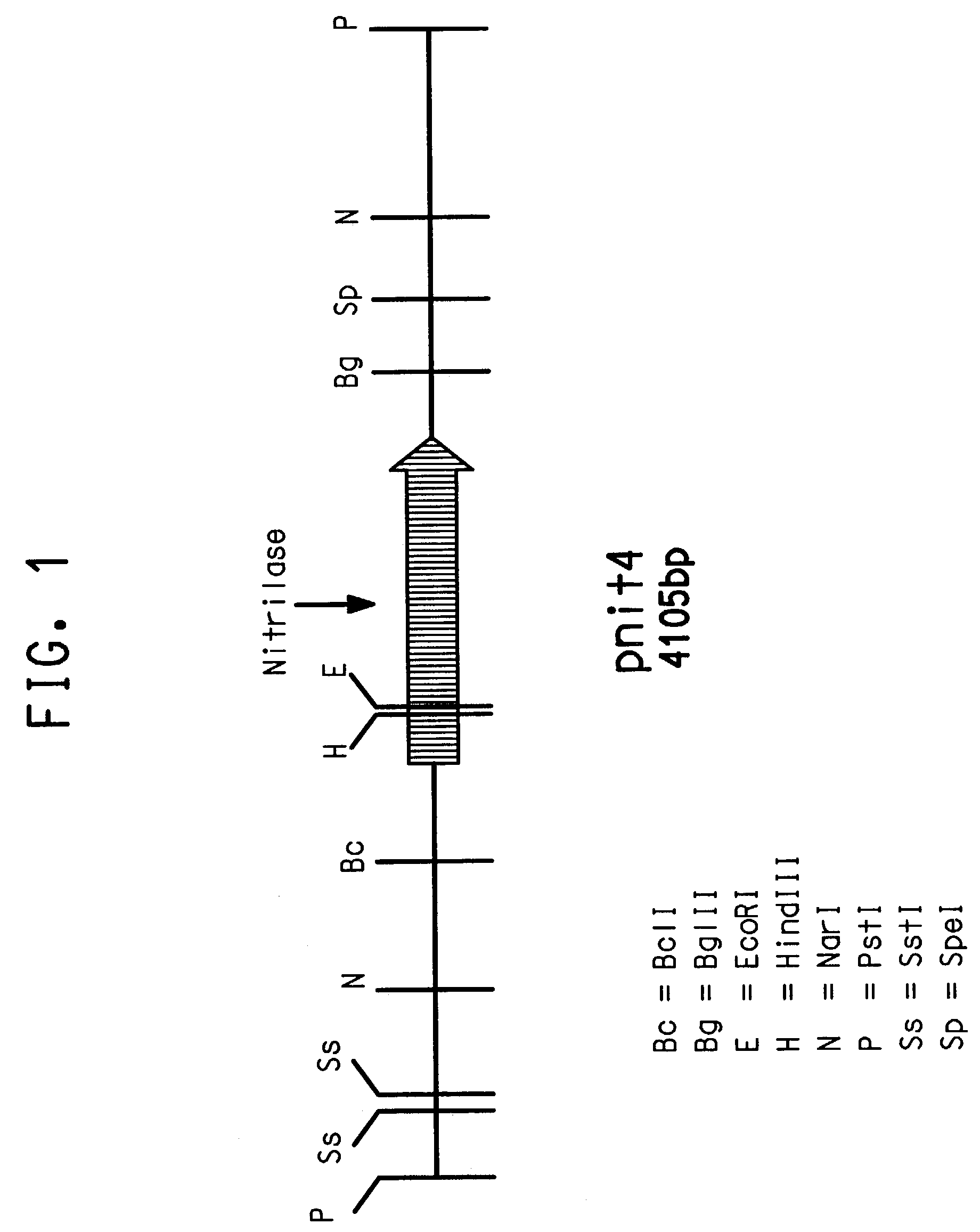Isolation and expression of a gene for a nitrilase from Acidovorax faclilis 72W
a technology of acidovorax faclilis and gene, which is applied in the field of molecular biology, can solve the problems of limiting industrial applications, reducing the specificity of nitrilases, and reducing the stability of nitrilases, so as to increase the specificity and stability of nitrilases
- Summary
- Abstract
- Description
- Claims
- Application Information
AI Technical Summary
Benefits of technology
Problems solved by technology
Method used
Image
Examples
example 1
Purification of Nitrilase Protein
[0153]All steps in this procedure were performed at 5° C. and at pH 7.5 unless otherwise stated.
[0154]A 25 wt % suspension of Acidovorax facilis 72W (ATCC 55746) wet cell paste was prepared in 20 mM Tris, pH 7.5, 0.1 mM phenyl methyl sulfonyl fluoride (PMSF), and 2.0 mM dithiothreitol.
[0155]An extract of this suspension was prepared by passage through a French press (American Instrument Co., Silver Springs, Md., USA) according to methods known to the art. Following a centrifugation at 27,500 g for 30 min to remove cell debris, a 20–55% ammonium sulfate fractionation of the extract was prepared and then concentrated by overnight precipitation following the addition of solid ammonium sulfate to 65% of saturation. The concentrated protein precipitate was reconstituted using a minimum volume of 20 mM Tris, pH 7.5 (Buffer A) and desalted over a PD10 column containing Sephadex G-25 resin (Pharmacia).
[0156]Following desalting, the concentrated protein extra...
example 2
Isolation of a DNA Fragment Showing High Homology to Known Nitrilases
[0157]Genomic DNA was isolated from Acidovorax facilis 72W (ATCC 55746) by standard methods (Maniatis) modified by adding two rounds of phenol-chloroform extraction. DNA so isolated was used as a target for amplification by PCR using primers IF (SEQ ID NO:1) and 7R (SEQ ID NO:2). The resulting amplified products were cloned into the pGem-T vector (Promega, Madison, Wis.) and sequenced by methods common to the art. Clone pJJ 28-5 yielded a 385 bp DNA fragment (SEQ ID NO:3) with 74.1% identity to a region of the nitrilase DNA sequence from Rhodococcus rhodochrous K 22 (GenBank Accession Number D12583).
example 3
Localization of a Chromosomal Fragment Containing a Sequence with High Homology to the 385 bp Partial-Gene Fragment
[0158]1–3 μg high molecular weight genomic DNA samples from Acidovorax facilis 72W were digested with restriction enzyme PstI in a buffer supplied by the manufacturer (Life Technologies (Gibco-BRL), Gaithersburg, Md., USA). Digested samples were resolved on agarose gels and Southern-blotted on nylon membrane. Cutting at restriction sites flanking the insert, a probe containing the 385 bp nitrilase gene fragment (SEQ ID NO:3) was prepared from pJJ28-5. Hybridizations were carried out at 60° C. followed by high stringency washes (0.1×SSC, 0.1% SDS, 60° C. for 15 min). Probe labeling, hybridization and detection for dot blots and subsequent Southern blotting experiments, were performed using ECL random prime labeling and detection systems version II, (Amersham International plc, Buckinghamshire, England).
[0159]Digests with PstI yielded a single 4.1 kb band upon hybridizati...
PUM
| Property | Measurement | Unit |
|---|---|---|
| temperature | aaaaa | aaaaa |
| temperatures | aaaaa | aaaaa |
| temperature | aaaaa | aaaaa |
Abstract
Description
Claims
Application Information
 Login to View More
Login to View More - R&D
- Intellectual Property
- Life Sciences
- Materials
- Tech Scout
- Unparalleled Data Quality
- Higher Quality Content
- 60% Fewer Hallucinations
Browse by: Latest US Patents, China's latest patents, Technical Efficacy Thesaurus, Application Domain, Technology Topic, Popular Technical Reports.
© 2025 PatSnap. All rights reserved.Legal|Privacy policy|Modern Slavery Act Transparency Statement|Sitemap|About US| Contact US: help@patsnap.com



